Corpus of the Inscriptions of Campā
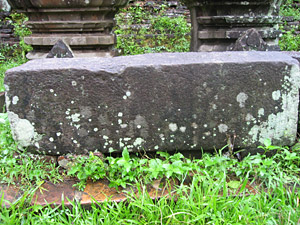
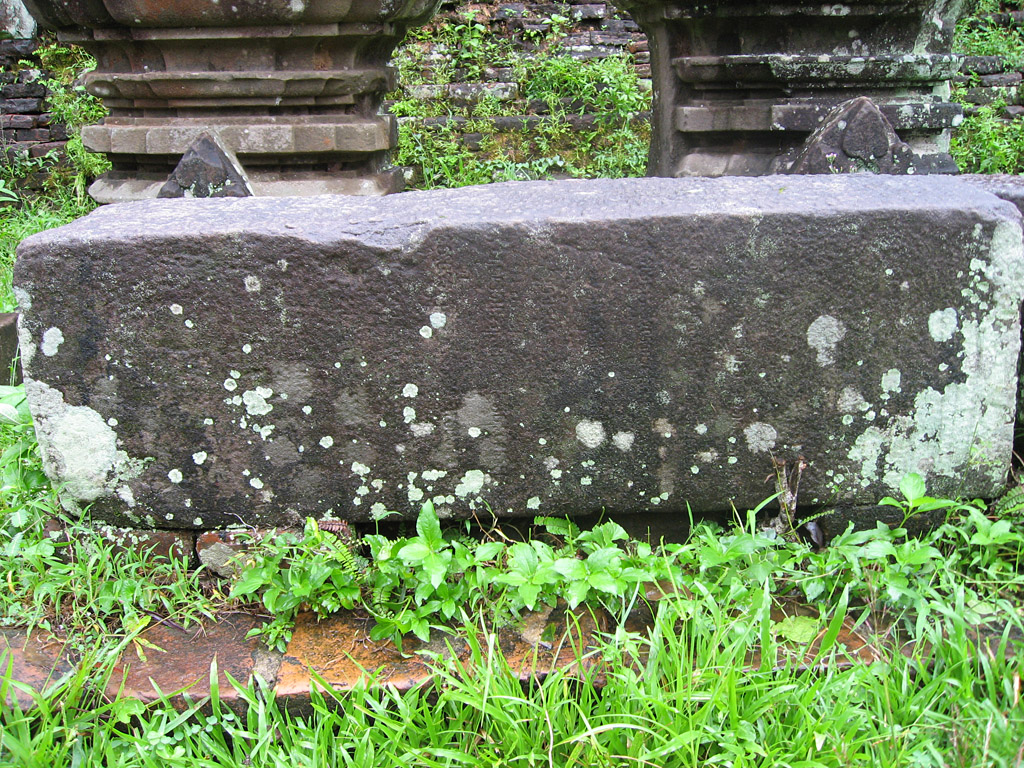
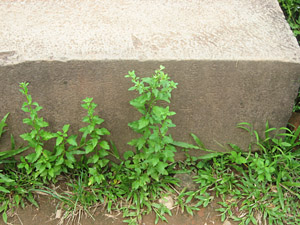
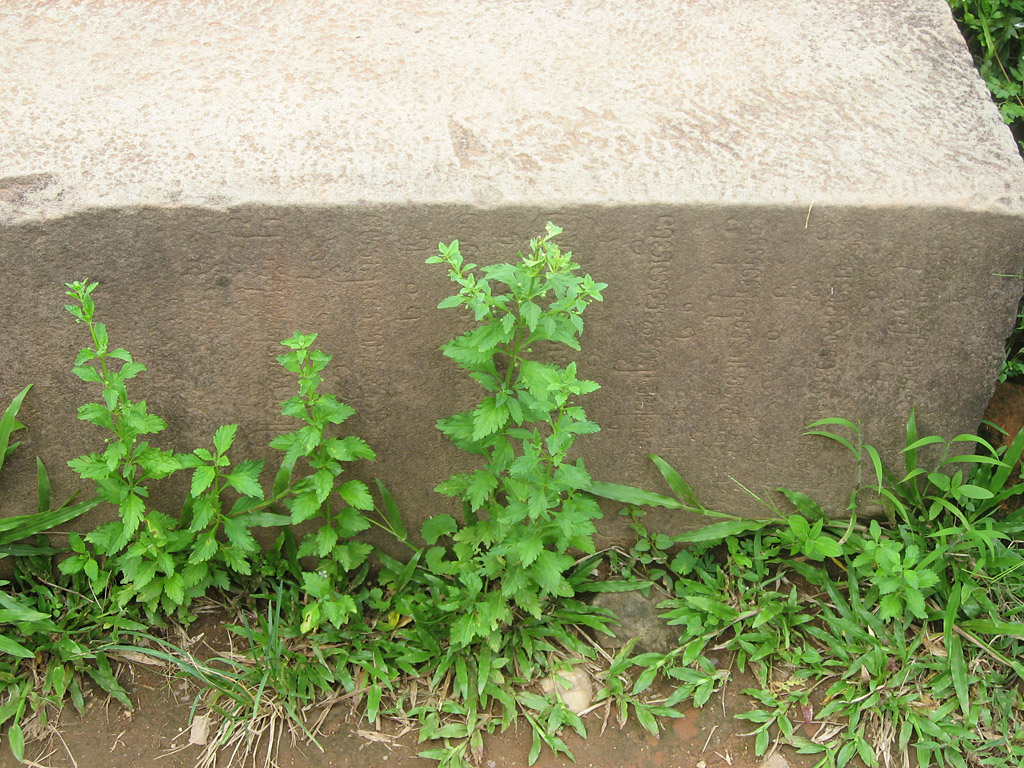
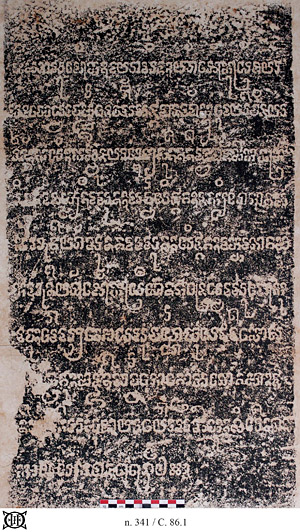
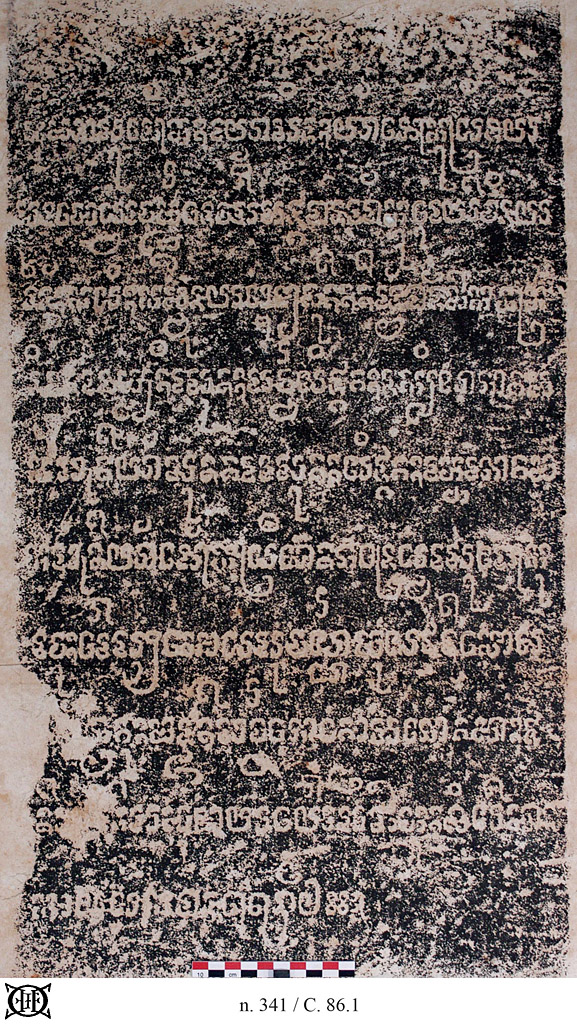
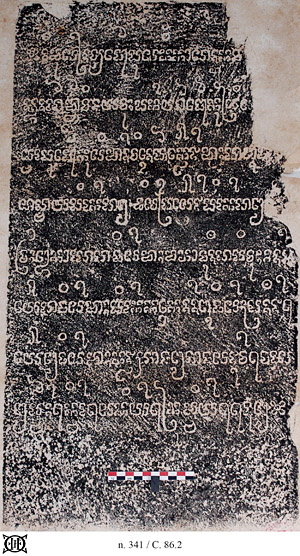
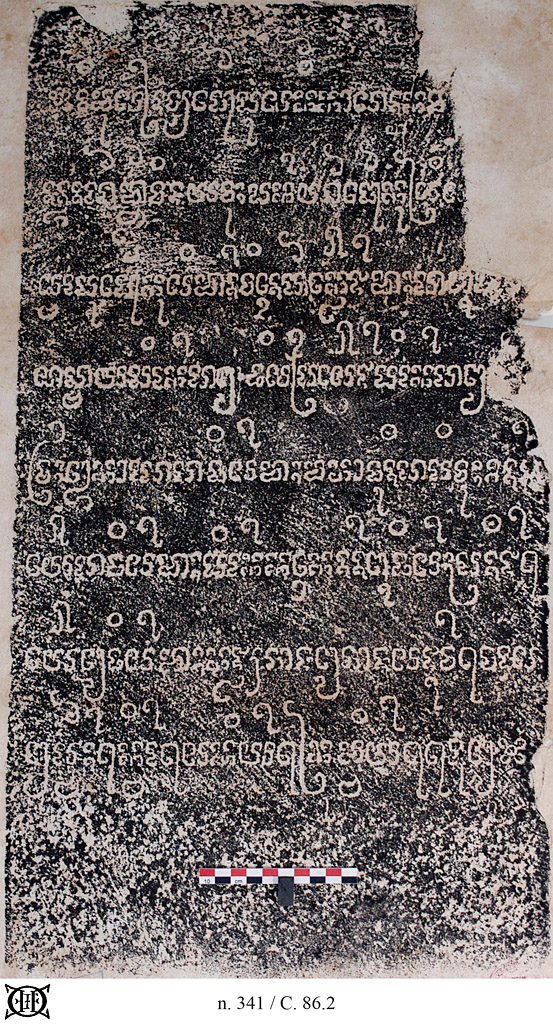
C. 86 Doorjamb at Mỹ Sơn
Please note: you are reviewing a preprint version of this publication. Contents here may change significantly in future versions. Scholars with specific interests are urged to consult all cited bibliography before using our texts and translations or drawing other significant conclusions.
Support Doorjamb; sandstone; we have not recorded dimensions, but Finot 1904d: 976 has recorded the following: h. 105 cm × w. 35.
Text two texts of 10 lines (C. 86.1) and 8 lines (C. 86.2) engraved on one face written in Old Cam.
Date 1156 Śaka (1234/5 CE). 1152 Śaka (1230/1 CE).
Origin Site of Mỹ Sơn (Quảng Nam).
It was found at Mỹ Sơn and was presented as the Northern interior doorjamb of B1 temple (Finot 1904d: 976). Later, Parmentier 1909: 382 informed us that the Northern doorjamb is “resté en place pour le bas (...) La partie supérieure A (i.e. the one bearing the inscriptions C. 86.1), qui menace de tomber, a été couchée sur le mur N. du vestibule”. We identified the stone at the Mỹ Sơn site in 2009, as the one bearing local inventory numbers 03MSD347 and 03MSB1601. C. 86.1 is now located in the D yard; C. 86.2 at the B1 temple's entrance (see ECIC III: 456 (map) and 458).
Edition(s) First published, with French translation, in Finot 1904d: 976-977; whence C. 86.2 was summed up and C. 86.1 was translated into English in Majumdar 1927: 207-208; Golzio 2004: 178 read and translated both. The present edition and translation after ECIC IV: 264-265.
Facsimiles
- Estampage: EFEO 325
- Estampage: EFEO n. 341 .2
The following text was edited by Arlo Griffiths and Amandine Lepoutre.
C. 86.1
C. 86.2
2 aum̃ aṅśarāja ◇ Finot 1904d: 976 added a note: “on pourrait aussi bien lire Saṅgarāja ; mais la comparaison de Po nagar 409, B,4 (i.e. C. 30 B4) ligne 2, où l'écriture est plus nette, montre que la vraie forme est Aṅçarāja”. — 5 ra punaḥ liṅga ◇ ra punaḥ sarvvaliṅga finot. — 9 yauṁ ◇ yoṁ finot.
1 nī ◇ ni finot. — 3 śrī[ānabhadre]śvara ◇ Reconstitution of Finot. — sā ◇ sa finot. — 4 [ca]lāhvaya ◇ one would also find this world in C. 6, l. 2. — 8 svam̃n ◇ svãḥ finot. — kvir ◇ kviṛ finot. It must be a typo.
Translation
C. 86.1
Il y eut un P.P.T.R., à savoir Y.P.K. Śrī Jayaparameśvaravarmadeva oṅ Aṅśarāja, personne de Turaiy Vijaya. À la suite de cette "guerre" du Cambodge qui [dura] 32 ans, il (i.e. le souverain) gouverna avec le parasol unique sur ce royaume du Campā. Il restaura tous les liṅga du côté Sud à savoir [ceux de] Yām̃ Pu Nagara ; il restaura les liṅga du côté Nord à savoir [ceux de] Y.P.K. Īśanabhadreśvara P.P.K. Il offrit un kośa d'argent avec un visage en or et un kośa à la divinité Bhṛguḥ avec tous les biens et les moyens de subsistance d'or et d'argent pour une valeur totale de cent thil d'or, en l'année 1156 du roi des Śaka.
C. 86.2
Ceci [est] le capital mobilier offert par le P.P. homme Kālāntakatha (...) nandana, personne de Mvlām̃ Vijaya, à Y.P.K. Śrī Īśanabhadreśvara P.P.K. : une éléphante, une petite boîte (klauṅ) d'or : 3 thil ; un calāhvaya en argent : 20 thil ; un collier d'argent : 20 thil ; un saint oṁkāra : un thil d'or ; une pierre précieuse dhunī donnée ganan d'une valeur d'un thil d'or ; cet argent pour le (tré)pied : 2 thil ; pranīṅ : 1 d'une valeur de 2 thil d'or ; vases de cuivre : 2 ; vase de métal cuivreux : 1 ; vadala : 2 ; svam̃n : 1 ; Khmers : 1 homme ; 1 femme. [En Śaka] 1152.
Secondary Bibliography
- Parmentier 1909: 381-382.
- ECIC III: 456 and 458.
Notes
- Recorded under these numbers in the registration of Mỹ Sơn as a Unesco World Heritage Site
- There are two estampages under the number n. 341.


